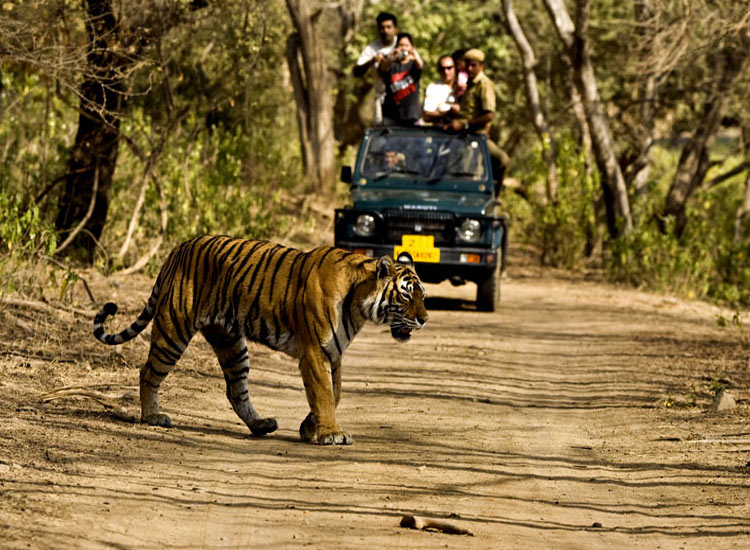
Fascinating Facts About Tigers
Hidden from the country’s busy cities, India offers amazing sanctuaries that are filled with wildlife. Safari goers from anywhere in the world are drawn to see a fantastic array of wild animals spotted in the country’s mountains, teakwood forest, grasslands, and rivers.
You can find more than a hundred national parks in India. These parks cover more than 15,600 square miles of protected land. Many of these wildlife sanctuaries used to be the maharajas’ hunting reserves.
The iconic Bengal tiger, India’s national animal, is one of its top wildlife attractions. According to the latest report, there are 2,967 tigers in the country in 2018, which is 741 more than the previous count four years earlier. Seventy percent of the tigers live at the tiger reserves.
The Tiger Safari India is one of the best teams offering the best tours if you want to see Bengal tigers in the country. Through their tours, you will learn a lot of things about tigers and their importance to nature. Read on to discover some fascinating facts about our giant furry friend, the tiger.
Why do they have stripes?
No big cats have stripes like the tigers. Each tiger’s stripes patterns are unique, giving them an identity. Imagine your fingerprints. The tiger’s stripes work the same.
When it comes to hunting, you wouldn’t imagine that this orange with black stripes can be very dangerous to their primary prey, the ungulates. These groups of large animals with hooves cannot see colors the way primates can. Moreover, to animals with poor vision, the tiger’s bold and contrasting colors are harder to distinguish out in the tall grass.

The method of their camouflage is a crucial predatory adaptation. Other big cats that rely on hunting in a group like the lions, or using their incredible speed like cheetahs. Meanwhile, tigers hunt silently and rely on their mysterious appearance to ambush their prey.
What is the tiger’s favorite meal?
Tigers eat meat as they are carnivorous mammals. They typically feast on large prey, such as wild boar, deer, and elephant calves. However, when a tiger gets old, sick, or injured, and unable to catch their regular prey, they’ll choose something easier to catch, like smaller, slower animals.
How do they hunt their prey?
Tigers take down their prey by attacking the animal on its neck and choke it with its powerful jaw. The prey will then die from suffocation. However, some prey bleed out first if the tiger hits an artery.
Is the tiger considered the biggest cat?
In the wild, tigers are the biggest cat. Male tigers grow to be more than three meters long and weigh up to 300 kilograms. Female tigers, however, are a bit smaller.
However, in captivity, there is a cat breed that is even larger than a tiger – a liger. It is a product of breeding a female tiger with a male lion. These big cats can grow up to 3.6 meters long. The largest living cat, Hercules, a liger, weighs around 420 kilograms. However, the heaviest record is a massive 550 kilograms.
Where do they live?
Tigers live across Asia, with a few of them left in South-East Asia. However, they are striving well in India, Nepal, Bhutan, and Russia. Their habitats vary by region. Larger Siberian tigers are found in colder northern regions, thriving in the brutal taiga. On the other hand, smaller tigers live in the warmer regions, thriving in tropical forests, arid forests, rainforests, mangroves, and flooded swamplands.

It is believed that India has half of the world’s remaining wild tigers, making several Indian national parks famous for frequent tiger sightings, such as Bandhavgarh, Kanha, and Ranthambore national parks.
How does it feel to be a baby tiger?
Baby tigers or tiger cubs usually hide in rock crevices, tall grass, or caves. They are blind as babies and rely on their mother for protection. However, when they grow as adults, they can see in the dark six times better than humans, making them effective hunters at night.
Mother tigers typically give birth to two or three baby tigers, but they can give birth to as many as six baby tigers. Each batch of baby tigers has a dominant cub that is more active than its siblings and always takes the lead during their play. The dominant cub is usually the first one to live on its own. At the age of 15 months, the mature cubs will find their territories.
Tigers are important to nature. Without them, the ecosystem will collapse, affecting all living things on the planet. This is why Tiger Safaris in India are doing their best to contribute to tiger conservation by teaching people how to take care of the tigers in the wild and their habitats.
These are just some of the fascinating facts about tigers. If you want to learn more, go and visit one of the nearest tiger sanctuaries to have an exciting close encounter with them.




